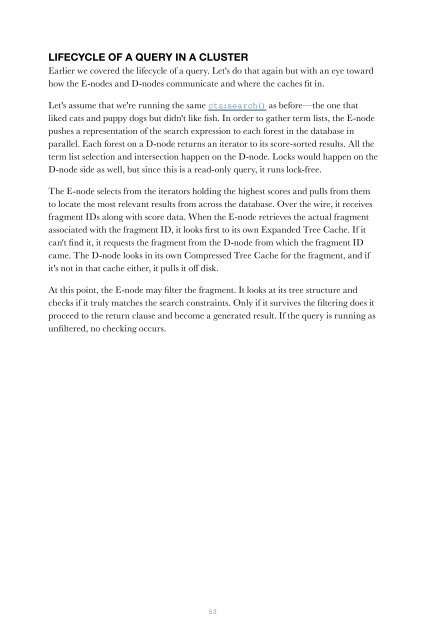Create successful ePaper yourself
Turn your PDF publications into a flip-book with our unique Google optimized e-Paper software.
LIFECYCLE OF A QUERY IN A CLUSTER<br />
Earlier we covered the lifecycle of a query. Let's do that again but with an eye toward<br />
how the E-nodes and D-nodes communicate and where the caches fit in.<br />
Let's assume that we're running the same cts:search() as before—the one that<br />
liked cats and puppy dogs but didn't like fish. In order to gather term lists, the E-node<br />
pushes a representation of the search expression to each forest in the database in<br />
parallel. Each forest on a D-node returns an iterator to its score-sorted results. All the<br />
term list selection and intersection happen on the D-node. Locks would happen on the<br />
D-node side as well, but since this is a read-only query, it runs lock-free.<br />
The E-node selects from the iterators holding the highest scores and pulls from them<br />
to locate the most relevant results from across the database. Over the wire, it receives<br />
fragment IDs along with score data. When the E-node retrieves the actual fragment<br />
associated with the fragment ID, it looks first to its own Expanded Tree Cache. If it<br />
can't find it, it requests the fragment from the D-node from which the fragment ID<br />
came. The D-node looks in its own Compressed Tree Cache for the fragment, and if<br />
it's not in that cache either, it pulls it off disk.<br />
At this point, the E-node may filter the fragment. It looks at its tree structure and<br />
checks if it truly matches the search constraints. Only if it survives the filtering does it<br />
proceed to the return clause and become a generated result. If the query is running as<br />
unfiltered, no checking occurs.<br />
52


